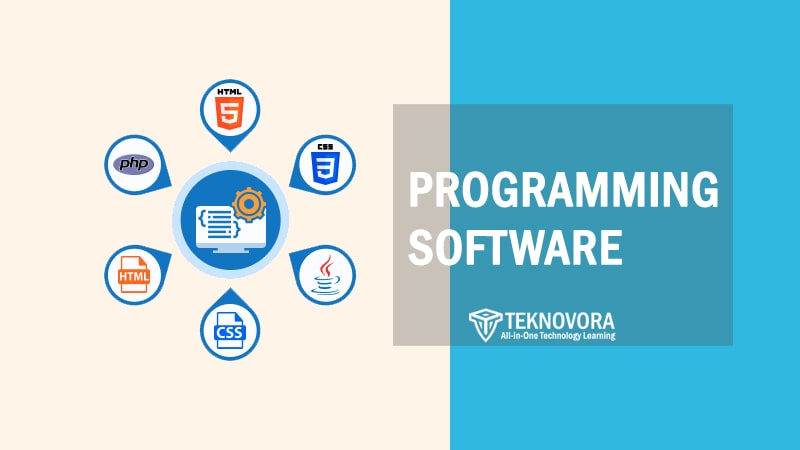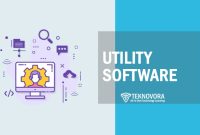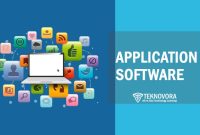Programming software is at the heart of every digital experience—from the apps on your smartphone to the systems running self-driving cars and online banking platforms. It’s the set of tools developers use to write, test, and maintain the code that powers modern technology. While we often focus on the final products—websites, applications, games—it’s programming software that quietly shapes how those products are created.
As the tech landscape grows more complex and fast-paced, choosing the right programming tools becomes critical. Developers need environments that support efficiency, flexibility, and collaboration across languages, platforms, and teams. Whether you’re building a simple mobile app or engineering a scalable cloud platform, the software behind your code can make or break your workflow.
This article explores what programming software really is, the types of tools available, and how they enable the digital innovations we rely on every day. From beginner-friendly code editors to powerful integrated development environments (IDEs), we’ll break down how each plays a role in modern software development—and how to choose the right one for your needs.
What Is Programming Software?
Programming software refers to a specialized class of computer programs designed to help developers create, edit, test, and maintain source code. Unlike general-purpose applications that are meant for end users (like word processors or browsers), programming software exists behind the scenes—serving as the digital workshop where all computer software is born.
It acts as the bridge between human logic and machine instructions. Through programming tools, developers can write code in various languages, identify errors, compile or interpret the code, and eventually turn it into functional applications, systems, or digital services.
What Makes It Different from Other Types of Software?
To understand programming software, it helps to contrast it with other major categories types of computer software:
| Type | Primary User | Purpose |
|---|---|---|
| System Software | Device/System Admins | Runs hardware (e.g., OS like Windows/Linux) |
| Application Software | End Users | Performs specific tasks (e.g., Excel, Spotify) |
| Programming Software | Developers | Creates and manages other software |
Programming software doesn’t solve an end-user problem directly. Instead, it enables the development of the software that does. Without it, developers wouldn’t have the tools necessary to write clean, functional, and efficient code.
Core Functions of Programming Software
- Writing Code: Providing environments with syntax highlighting, auto-complete, and formatting tools.
- Testing and Debugging: Catching errors through breakpoints, real-time analysis, and simulation environments.
- Compiling and Interpreting: Converting human-readable code into machine-executable programs.
- Code Management: Supporting version control, refactoring, and code navigation features.
Examples of Programming Software in Action
- A developer writes a Python script in VS Code, runs it via a terminal, and debugs using built-in breakpoints.
- A mobile app is created using Android Studio, which combines a code editor, compiler, and emulator in one IDE.
- A web project is collaboratively managed through GitHub and built using Node.js, with real-time collaboration via extensions.
Programming software is more than just a tool—it’s the foundation of software engineering, enabling everything from basic websites to advanced AI systems. In the next section, we’ll break down the different types of programming software, each built for a unique purpose in the development pipeline.
Core Types of Programming Software

Programming software isn’t a single tool—it’s a collection of specialized tools that serve different stages of the software development process. From writing code to compiling it, and from debugging errors to managing codebases, each type of programming software plays a critical role.
Let’s explore the most essential categories used by developers around the world.
Text Editors
Text editors are the most basic type of programming tool, designed to create and edit plain text files. While they lack advanced features like debugging or compiling, they are lightweight and fast—making them ideal for quick code edits or scripting.
Examples:
- Notepad++
- Sublime Text
- Vim
When to use:
- Writing small scripts or configuration files
- Editing code on low-resource systems
- Developers who prefer minimal, keyboard-driven environments
Code Editors
Code editors take text editors a step further by adding programming-focused features like syntax highlighting, error detection, code suggestions, and extensions.
Examples:
- Visual Studio Code
- Atom
- Brackets
Key features:
- Real-time error checking
- Auto-completion (IntelliSense)
- Extension marketplace (e.g., linting, Git integration)
Ideal for:
- Web and application developers
- Front-end and back-end programming
- Lightweight but extensible development
Integrated Development Environments (IDEs)
An IDE combines multiple programming tools into a single application, including a code editor, compiler or interpreter, debugger, project manager, and often an emulator or terminal. IDEs are built for serious development projects and improve efficiency by integrating everything developers need.
Examples:
- IntelliJ IDEA
- Eclipse
- NetBeans
- PyCharm
- Android Studio
- Xcode
Key strengths:
- All-in-one solution for professional development
- Built-in debugging and build tools
- Intelligent code navigation and refactoring
Best for:
- Large-scale or complex projects
- Enterprise development teams
- Language-specific workflows (e.g., Java, Python, Swift)
Compilers
A compiler translates source code written in a high-level language into a lower-level language, often machine code or bytecode. This translation is essential for producing executable programs.
Examples:
- GCC (GNU Compiler Collection)
- Clang
- javac (Java compiler)
Use cases:
- Converting C/C++ code into executable files
- Java code into JVM bytecode
- Optimizing performance during the build process
Interpreters
While compilers translate all code at once, interpreters execute code line by line. They are ideal for scripting languages where rapid testing and iteration are necessary.
Examples:
- Python Interpreter
- Node.js
- Ruby Interpreter
Advantages:
- Easier debugging and quick testing
- No need for compiling before execution
- Preferred in scripting, automation, and data analysis
Debuggers
Debuggers help developers find and fix bugs by allowing them to inspect variables, control execution flow, and analyze program behavior during runtime.
Examples:
- GDB (GNU Debugger)
- Chrome DevTools (for JavaScript)
- LLDB (LLVM Debugger)
Key functions:
- Breakpoints
- Step-through execution
- Variable inspection and watch expressions
Build Tools & Version Control
These tools assist in compiling code, managing dependencies, and tracking changes over time—especially crucial in team-based development and CI/CD pipelines.
Build tools:
- Maven
- Gradle
- Make
Version control tools:
- Git
- GitHub / GitLab
- Bitbucket
Purpose:
- Automate builds, tests, and deployment
- Enable collaboration and version tracking
- Support Agile, DevOps, and continuous delivery
Each of these programming software types plays a distinct role—from writing and organizing code to building and maintaining entire systems. Together, they form a complete toolkit for modern development.
Key Features of Good Programming Software
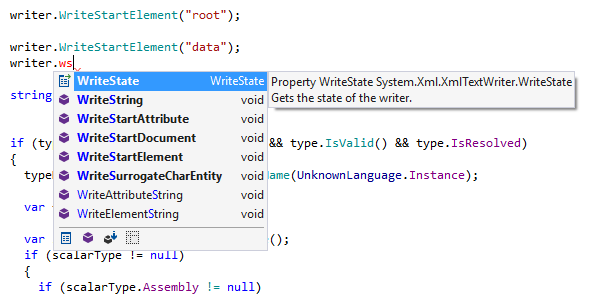
Not all programming tools are created equal. Some are lightweight and minimalist, while others are feature-packed and designed for enterprise-scale development. Regardless of the use case, great programming software tends to share a few essential characteristics—features that boost productivity, reduce errors, and make coding more intuitive.
Here are the key features that define high-quality programming software:
Multi-Language Support
Modern developers often work across multiple programming languages. Good software should offer robust support for various languages either natively or via plugins—allowing developers to switch between projects without changing tools.
Example: VS Code supports Python, JavaScript, C++, Go, and more—all from one interface.
Syntax Highlighting & Code Formatting
Syntax highlighting makes code easier to read by visually separating elements like keywords, variables, functions, and comments. Combined with auto-formatting tools, it improves readability and reduces mistakes.
Benefit: Developers can spot errors quickly and navigate large codebases more efficiently.
Intelligent Code Completion (IntelliSense)
Auto-suggestions for code, functions, variables, and even method parameters help speed up writing and reduce typos. Some platforms use AI-driven engines to enhance prediction accuracy.
Tools that excel here: IntelliJ IDEA, PyCharm, Visual Studio Code
Integrated Debugging Tools
Being able to debug within the same interface speeds up troubleshooting and testing. Features like breakpoints, call stacks, and watch expressions are critical for tracking down bugs.
Benefit: No need to jump between external tools or terminals—everything happens in one place.
Version Control Integration
Seamless Git integration allows developers to commit, push, pull, and manage branches directly within their editor or IDE. This is a must-have for any team-based or long-term project.
Examples:
- Git panel in VS Code
- Built-in Git tools in JetBrains IDEs
- GitHub extensions for collaboration
Built-In Terminal or CLI Access
Rather than switching between a code editor and a command-line interface (CLI), many modern tools provide an integrated terminal—making it easy to run scripts, build projects, or install dependencies without leaving the editor.
Extension & Plugin Ecosystem
A strong extension system allows users to tailor the tool to their workflow. From linters and theming to language packs and container integration, extensions keep your tool lightweight but powerful.
Examples of popular extensions:
- ESLint, Prettier, Docker, Jupyter, Remote SSH
Cross-Platform Compatibility
Whether you’re working on Windows, macOS, or Linux, good programming software should offer consistent functionality across environments. This is especially important for teams with varied setups or developers working remotely.
Cloud & Collaboration Features
More tools now support real-time collaboration (like VS Code Live Share), cloud sync, and even full browser-based development environments (e.g., GitHub Codespaces, Replit).
These features are not just conveniences—they directly affect developer speed, accuracy, and satisfaction. Choosing programming software with these capabilities ensures you’re set up for scalable, efficient development.
How Programming Software Supports Modern Development
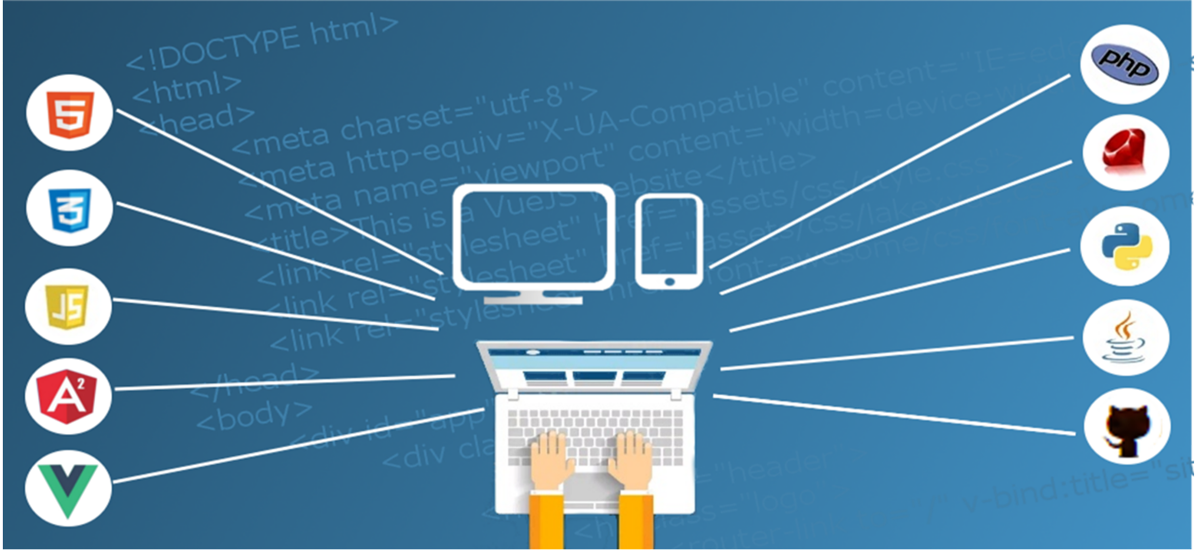
As software projects become larger, faster-paced, and more collaborative, the tools developers use must evolve accordingly. Programming software today does far more than just let you write code—it actively supports the entire development lifecycle, from planning and prototyping to deployment and maintenance.
Here’s how programming software plays a vital role in modern software engineering:
Enabling Agile and DevOps Workflows
In Agile development, iteration speed and collaboration are essential. Programming tools now integrate directly with version control systems, task boards, testing environments, and CI/CD pipelines.
- Version control integration (Git, GitHub, GitLab) helps teams collaborate on shared codebases.
- CI/CD tools (Jenkins, GitHub Actions, CircleCI) can be triggered directly from your code environment.
- Code reviews, pull requests, and merge tools are now embedded within many editors and IDEs.
These integrations allow for rapid prototyping, quick bug fixes, and continuous delivery of updates—all while maintaining code quality.
Supporting Full-Stack & Cross-Platform Development
Modern applications often span multiple layers—front-end, back-end, mobile, and cloud. Programming software now supports cross-platform development workflows through features like:
- Language interoperability (e.g., TypeScript with React, Node.js, and MongoDB)
- Mobile and web frameworks (e.g., Flutter, React Native, Angular)
- Cloud-native development (with Docker, Kubernetes, and microservices integration)
Example: A developer can use Visual Studio Code with extensions for Docker, ESLint, Git, and Kubernetes, allowing full-stack development without switching environments.
Boosting Collaboration Among Remote & Distributed Teams
Programming is no longer a solo activity. Most development teams are remote or distributed across time zones. Today’s tools are built with real-time collaboration and cloud syncing in mind.
- VS Code Live Share enables pair programming from different locations in real time.
- Cloud IDEs like GitHub Codespaces and Replit allow developers to access the same workspace from anywhere, instantly.
- Shared terminal access and remote debugging streamline team troubleshooting.
This collaborative shift enhances productivity and breaks down silos in development teams.
Automating Repetitive Development Tasks
Modern programming software integrates automation in many aspects:
- Linting and formatting with tools like ESLint, Prettier, and Black
- Auto-build triggers during file saves or commits
- Intelligent error detection that catches problems before runtime
- Template and snippet engines for repetitive code structures
By reducing manual tasks, developers can focus on logic, design, and solving real problems rather than syntax or config setup.
Improving Code Quality and Security
With the rising importance of secure and reliable software, programming tools now support:
- Static code analysis to find bugs and vulnerabilities early
- Built-in test runners for unit and integration testing
- Security scanning plugins (e.g., Snyk, SonarLint) that flag risks directly in the editor
High-quality programming software helps enforce best practices and reduce the chance of costly errors in production.
In short, programming software has evolved from being just a code editor to becoming the engine that powers entire software ecosystems. It enables modern development workflows that are fast, collaborative, and scalable—supporting everyone from solo developers to enterprise teams.
Popular Programming Software in 2025

With the rapid evolution of development tools, staying up to date with the most effective programming software is essential. In 2025, developers have access to a wide range of high-performance tools—each catering to different needs, from beginner-friendly environments to enterprise-grade platforms.
Here are some of the most popular and widely used programming software tools today:
1. Visual Studio Code (VS Code)
Type: Code Editor
Platform: Windows, macOS, Linux
Why it’s popular:
- Lightweight but powerful
- Vast extension marketplace
- Built-in Git integration
- Highly customizable
- Strong support for Python, JavaScript, Go, C++, and more
Best for: Web development, cross-platform scripting, full-stack projects
2. IntelliJ IDEA
Type: IDE
Platform: Windows, macOS, Linux
Why it’s popular:
- Excellent support for Java, Kotlin, and Scala
- Smart code analysis and refactoring
- Integrated test runners, version control, build tools
- Robust plugin system
Best for: Java development, enterprise backend, Android backend services
3. PyCharm
Type: IDE
Platform: Windows, macOS, Linux
Why it’s popular:
- Specifically tailored for Python
- Django support for web apps
- Built-in debugger and scientific tools
- Integrated with Jupyter, Conda, and virtualenv
Best for: Python development, data science, machine learning
4. Eclipse
Type: IDE
Platform: Cross-platform
Why it’s still relevant:
- Long-time favorite for Java and C/C++
- Strong plugin ecosystem
- Large user base in academia and enterprise
- Open source
Best for: Java EE projects, embedded system development
5. Android Studio
Type: IDE
Platform: Windows, macOS, Linux
Why it’s popular:
- Official IDE for Android development
- Rich emulator and device testing tools
- Code templates, layout preview, Gradle integration
Best for: Native mobile app development for Android
6. Xcode
Type: IDE
Platform: macOS
Why it’s popular:
- Official Apple IDE
- Swift and Objective-C support
- Excellent UI design tools
- Seamless iOS/macOS deployment
Best for: iOS/macOS app development
7. GitHub Codespaces
Type: Cloud-based IDE
Platform: Browser (cloud-native)
Why it’s rising:
- Full-featured, hosted VS Code in the cloud
- Launch dev environments from any repo
- Preconfigured containers
- Ideal for remote development
Best for: Cloud-first teams, quick onboarding, collaborative coding
8. Replit
Type: Cloud IDE
Platform: Browser
Why it’s popular:
- Beginner-friendly interface
- Supports 50+ languages
- Real-time multiplayer coding
- Auto-saving and instant preview
Best for: Students, collaborative learning, prototyping
9. NetBeans
Type: IDE
Platform: Windows, macOS, Linux
Why it’s notable:
- Solid support for Java, PHP, and HTML5
- Visual GUI builder for Java
- Easy setup with Maven and Ant
Best for: Java SE/EE developers, educational use
10. Sublime Text
Type: Text/Code Editor
Platform: Cross-platform
Why it’s loved:
- Blazing fast
- Minimalist yet powerful
- Extensible with packages and themes
Best for: Quick edits, script development, minimalist workflows
Open Source vs Proprietary Tools
| Software | License | Customization | Cost |
|---|---|---|---|
| VS Code | Free/Open Source | High | Free |
| IntelliJ IDEA (Community) | Free | Moderate | Free/Paid (Ultimate) |
| Eclipse | Free/Open Source | High | Free |
| Android Studio | Free | Moderate | Free |
| Replit | Freemium | Low | Free/Paid |
| Xcode | Free | Low (Apple-only) | Free |
For Beginners vs Professionals
| User Type | Recommended Tools |
|---|---|
| Beginners | VS Code, Replit, Thonny (Python), Sublime Text |
| Intermediate | PyCharm, IntelliJ IDEA, Android Studio |
| Professionals | IntelliJ Ultimate, GitHub Codespaces, Xcode |
Programming software in 2025 is more powerful, accessible, and flexible than ever. Whether you’re learning your first language or deploying a large-scale distributed system, there’s a tool tailored to your goals.
How to Choose the Right Programming Software
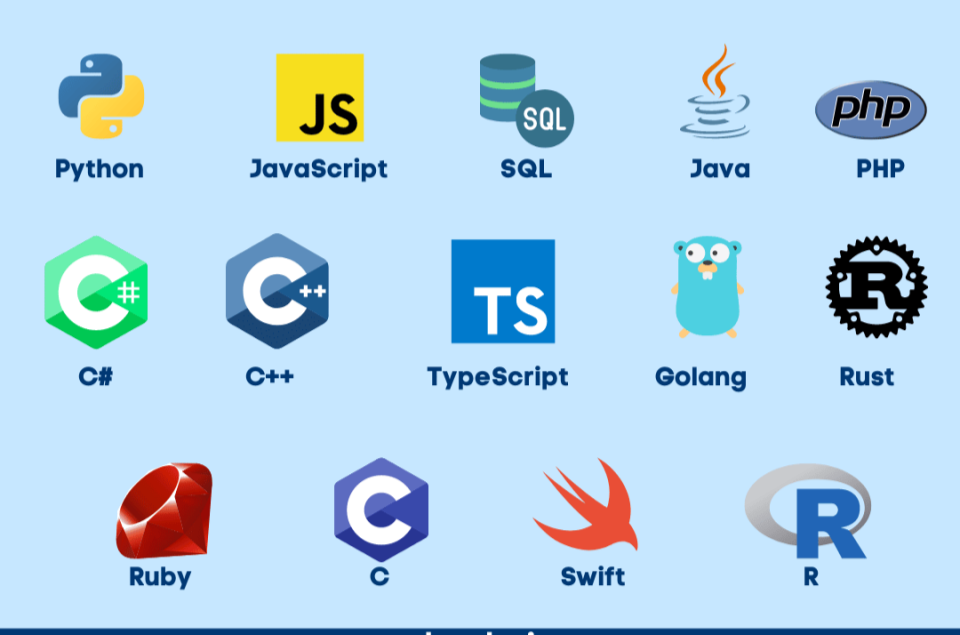
With so many options available, choosing the right programming software can feel overwhelming—especially for beginners or teams with diverse workflows. However, selecting the right tool comes down to a few practical considerations: your project type, preferred language, skill level, and development environment.
Here’s a guide to help you narrow down your options:
1. Choose Based on Programming Language
Different tools offer better support for specific languages, often with language-specific plugins, linters, and debugging capabilities.
| Language | Recommended Tools |
|---|---|
| Python | PyCharm, VS Code, Thonny |
| JavaScript | VS Code, WebStorm, Sublime Text |
| Java | IntelliJ IDEA, Eclipse, NetBeans |
| C/C++ | CLion, Code::Blocks, VS Code |
| Swift | Xcode |
| Dart (Flutter) | Android Studio, VS Code |
2. Choose Based on Project Type
Your software should support the architecture, platform, and frameworks you plan to use.
| Project Type | Best Fit Tools |
|---|---|
| Web Development | VS Code, Atom, WebStorm |
| Mobile App Development | Android Studio, Xcode, Flutter IDE |
| Game Development | Unity IDE, Rider, VS Code |
| Embedded Systems | Eclipse, PlatformIO, Code::Blocks |
| Data Science & AI | PyCharm, JupyterLab, VS Code |
| Enterprise Backend | IntelliJ IDEA, Eclipse, Visual Studio |
3. Consider System Resources
If you’re working with limited RAM or CPU (especially on older machines), opt for lightweight editors or cloud-based IDEs that offload processing.
- Low-resource: Sublime Text, Vim, Notepad++
- Cloud-based: Replit, GitHub Codespaces, Gitpod
- Full IDE (high resource): IntelliJ IDEA, Android Studio, Xcode
4. Evaluate Features and Extensions
Ask yourself:
- Do I need integrated Git and terminal?
- Will I be using a build system or containerized workflow?
- Do I prefer minimal UI or feature-rich environments?
- Is real-time collaboration necessary?
Example: If you’re coding in Python for data science and want Jupyter support, VS Code with the Jupyter extension or PyCharm Professional would be ideal.
5. Factor in Community & Support
Tools with active communities offer:
- Faster bug fixes
- More extensions or plugins
- Better learning resources
Highly supported tools: VS Code, IntelliJ IDEA, Android Studio, GitHub Codespaces
6. Don’t Ignore Learning Curve
Some tools, like Vim or Emacs, are incredibly powerful but have steep learning curves. Beginners may benefit more from tools with intuitive UIs and integrated help.
Beginner-friendly:
- VS Code
- Thonny (for Python)
- Replit (for fast, browser-based learning)
Ultimately, the “best” programming software is the one that aligns with your project goals, coding style, and development environment. As your skills grow, your toolbox will naturally evolve—so it’s okay to start simple and upgrade as needed.
Programming Software for Beginners
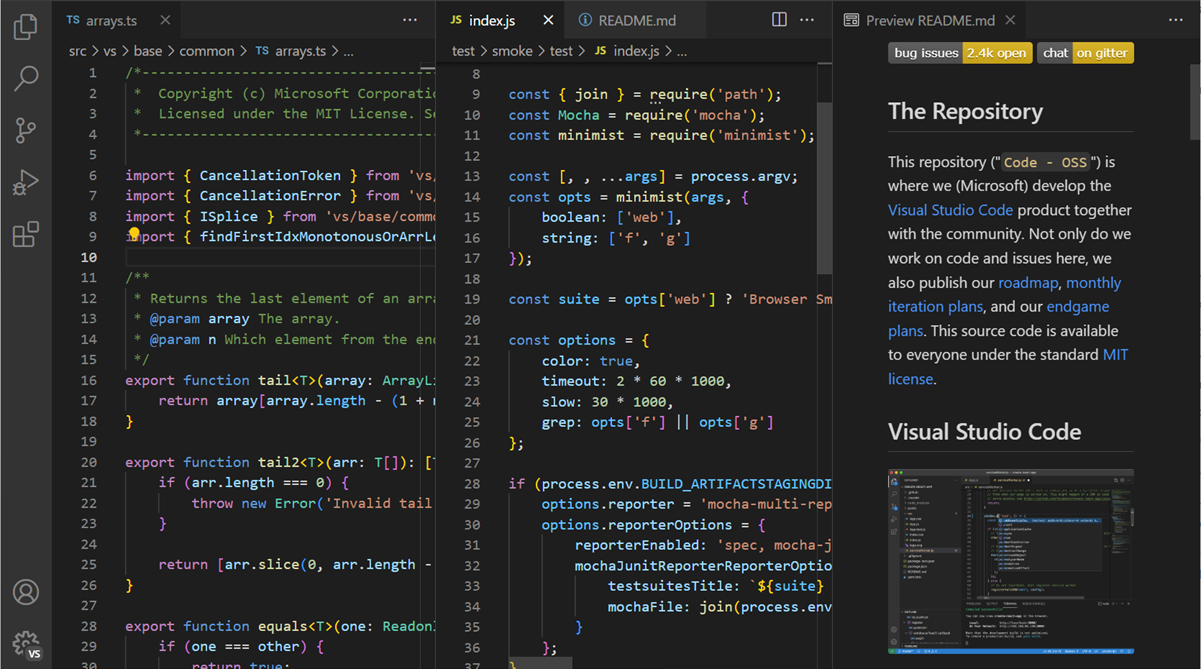
For those just starting their journey in software development, choosing the right programming software can make a big difference. The best beginner tools are simple to use, easy to set up, and provide features that gently guide new coders without overwhelming them with complexity.
Here’s a guide to help beginners get started with the right programming software.
What Beginners Need in Programming Software
- Clean and intuitive interface
- Minimal setup or installation steps
- Helpful feedback like syntax errors or hints
- Support for widely used languages like Python or JavaScript
- Optional cloud access to code from anywhere
Most importantly, beginner-friendly tools should remove friction—so learners can focus on understanding code rather than managing configuration.
Top Programming Software for Beginners
1. Thonny
- Language: Python
- Platform: Windows, macOS, Linux
- Why it’s great: Built specifically for teaching Python. It offers a simple interface, built-in debugger, and variable visualizer.
2. Replit
- Type: Cloud IDE
- Platform: Web browser
- Why it’s great: No installation needed. Supports over 50 languages. Replit makes it easy to start coding instantly and collaborate in real time.
3. Visual Studio Code (VS Code)
- Type: Code editor
- Platform: Windows, macOS, Linux
- Why it’s great: Free, powerful, and highly customizable. With beginner-focused extensions like Python, Live Server, and GitHub Copilot, it grows with the user.
4. Code.org / Scratch (for kids and early learners)
- Platform: Web
- Why it’s great: Visual programming environments that help build computational thinking and logic using drag-and-drop blocks.
5. GitHub Codespaces (for advanced beginners)
- Type: Cloud IDE
- Platform: Browser-based
- Why it’s great: Offers full development environments in the cloud, preconfigured with necessary tools and Git integration. Great for learners familiar with Git and GitHub.
Tips for Beginners Choosing Programming Software
- Start with a simple language like Python or JavaScript, then choose tools that support it well.
- Avoid feature-heavy IDEs at first (like Eclipse or IntelliJ Ultimate) unless your learning path specifically requires them.
- Focus on understanding core concepts: syntax, variables, loops, and logic—your tool should support, not distract.
- Join communities around your chosen tool. Forums and tutorials will accelerate your learning.
- Try multiple tools. As you grow, experimenting with new environments will help you discover your preferences.
Starting with the right programming software can build confidence and reduce frustration in the early stages of learning. And as a beginner’s skills mature, these tools often scale with them—offering deeper features when they’re ready.
Conclusion
Programming software plays a foundational role in how digital systems are created, scaled, and maintained. From basic code editors to powerful integrated development environments, these tools enable developers to build everything from mobile apps to enterprise platforms.
Understanding the types of programming software—compilers, debuggers, IDEs, cloud editors—and their features helps both new and experienced developers make better decisions. Whether you’re learning to code for the first time or deploying production-ready applications, choosing the right tools can dramatically improve your workflow and efficiency.
As software development continues to evolve, programming software is becoming smarter, more connected, and more accessible than ever before. With the rise of AI coding assistants, cloud-based development, and real-time collaboration features, the future promises a coding experience that’s faster, more flexible, and deeply integrated across teams and platforms.
Investing time in understanding and mastering your programming environment isn’t just a technical choice—it’s a strategic one. The right tools don’t just help you write code—they help you build better, smarter, and more impactful software.
FAQ About Programming Software
What is programming software used for?
Programming software is used to write, edit, test, and manage code that powers applications, websites, and systems. It includes tools like text editors, IDEs, compilers, and debuggers.
What’s the difference between a code editor and an IDE?
A code editor is a lightweight tool focused on writing and editing code, while an IDE (Integrated Development Environment) includes additional features like debugging, compiling, and project management in a single interface.
Which programming software is best for beginners?
For beginners, Visual Studio Code, Replit, and Thonny (for Python) are great choices due to their simplicity, ease of setup, and helpful features like syntax highlighting and built-in debuggers.
Is cloud-based programming software reliable for serious development?
Yes. Cloud IDEs like GitHub Codespaces and Replit have matured significantly and support serious development workflows. They’re ideal for collaboration, remote teams, and fast setup.
Can AI tools write code for me?
AI tools like GitHub Copilot or Amazon CodeWhisperer can assist by suggesting or completing code, but they’re meant to enhance—not replace—human developers. You still need to understand, test, and manage the code responsibly.

